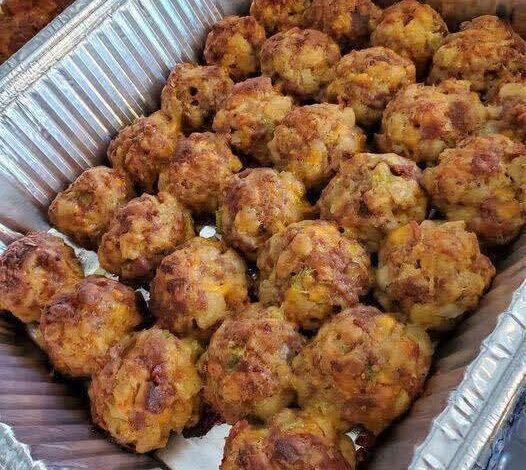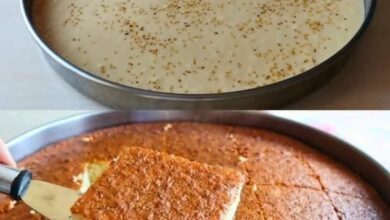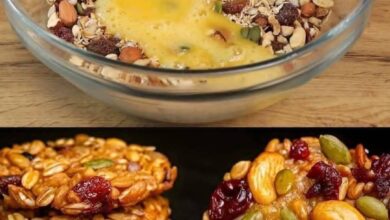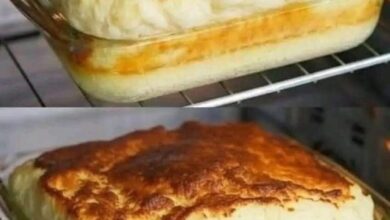A Culinary Embrace: The Joy of Stuffing Balls

Of course! Here is a comprehensive, “big” recipe for Stuffing Balls, complete with all the sections you’ve requested.
—
A Culinary Embrace: The Joy of Stuffing Balls
Stuffing is the undisputed champion of comfort food, a fragrant and savory pillow that soaks up the juices of a holiday roast. But what happens when you liberate this classic from the bird’s cavity and give it a form of its own? You get Stuffing Balls—a crispy-on-the-outside, tender-on-the-inside delight that is versatile, shareable, and utterly irresistible. They are the perfect solution for ensuring everyone gets a perfect portion of that beloved flavor, making them a star not just on Thanksgiving, but on any plate, any day of the year.
—
The History: From Inside the Bird to a Star of the Table
The story of stuffing, or “dressing” as it’s often called when cooked separately, is as old as cooking itself. The practice of stuffing the cavities of birds and other animals with a seasoned mixture dates back to the Roman Empire, with recipes recorded in the famous cookbook “Apicius.” The purpose was practical: to season the meat from the inside, make use of leftover bread, and add moisture.
The evolution into stuffing balls is a more modern convenience and innovation. By forming the mixture into individual spheres, cooks achieved a greater surface area, leading to more of the coveted crispy edges. This method also solved the problem of uneven cooking when stuffing was packed inside a turkey, ensuring food safety and a perfect texture throughout. Today, stuffing balls are a celebrated variation, loved for their ease of serving and elegant presentation.
—
The Benefits: Why You’ll Love Making Stuffing Balls
· Perfect Portion Control: Each ball is a self-contained serving.
· Maximum Crispiness: Unlike a dense casserole, each ball gets an even, golden-brown crust all around.
· Food Safety: Cooking separately from poultry eliminates any risk of undercooking.
· Versatility: They are a perfect side for roast chicken, turkey, or pork, and they make a fantastic appetizer or potluck contribution.
· Make-Ahead Friendly: You can prepare the mixture a day in advance, making holiday meal prep a breeze.
—
The Formation: Crafting the Perfect Sphere
The key to a stuffing ball that holds its shape lies in the binder—in this case, the eggs and stock. The mixture should be moist but not soupy. When you squeeze a handful, it should pack together easily. If it’s too crumbly, add a bit more stock. If it’s too wet, a touch more bread or a few minutes of sitting time will help. Roll them gently but firmly in your hands, aiming for a size slightly larger than a golf ball. Don’t over-pack them; a light touch ensures a tender interior.
—
Ingredients & Nutrition
Ingredients:
· 8 cups stale bread, cut into ½-inch cubes (a mix of white, sourdough, or cornbread is excellent)
· ½ cup (1 stick) unsalted butter
· 1 large yellow onion, finely diced
· 2 celery stalks, finely diced
· 3 cloves garlic, minced
· 2 teaspoons fresh sage, finely chopped
· 1 tablespoon fresh thyme leaves
· ¼ cup fresh parsley, finely chopped
· 2 large eggs, lightly beaten
· ¾ to 1 cup chicken or vegetable stock, plus more if needed
· 1 teaspoon salt (or to taste)
· ½ teaspoon freshly ground black pepper
Optional Add-Ins:
· 1 cup cooked and crumbled sausage (pork or sage)
· ½ cup dried cranberries or cherries
· ¾ cup chopped walnuts or pecans
· 1 cup shredded sharp cheddar cheese
Nutritional Profile (Approximate, per ball):
· Calories: 120-150 kcal
· Carbohydrates: 15g
· Protein: 4g
· Fat: 6g
· Fiber: 1g
· Sodium: 250mg
· Note: Nutrition can vary significantly based on specific ingredients and add-ins used.
—
Methods & Instructions
Method: The Sauté and Combine Technique
This method involves building a flavor base by sautéing aromatics in fat, then combining them with the dry bread and a wet binder. It’s the classic and most reliable way to achieve deeply flavorful and textured stuffing balls.
Step-by-Step Instructions:
1. Prepare the Bread: If your bread isn’t already stale, spread the cubes on a baking sheet and toast in a 300°F (150°C) oven for 15-20 minutes until dried out but not browned. Let them cool completely. Place the bread cubes in a very large mixing bowl.
2. Sauté the Aromatics: In a large skillet over medium heat, melt the butter. Add the diced onion and celery and cook for 8-10 minutes, until softened and translucent. Add the minced garlic, sage, and thyme, and cook for one more minute until fragrant. Remove from heat and stir in the fresh parsley.
3. Combine the Mixture: Pour the entire contents of the skillet (butter and all) over the bread cubes in the mixing bowl. Gently toss until the bread is evenly coated with the butter and vegetables.
4. Add the Binder: In a small bowl or measuring jug, whisk the two eggs with ¾ cup of the stock. Pour this over the bread mixture. Add the salt and pepper. Using your hands or a large spoon, mix everything together thoroughly. The goal is for the bread to be moistened throughout. If the mixture seems dry and doesn’t hold together when pressed, add the remaining ¼ cup of stock, one tablespoon at a time.
5. Chill (Crucial Step): Cover the bowl and refrigerate the stuffing mixture for at least 30 minutes, or up to overnight. This allows the bread to fully absorb the liquid, resulting in a mixture that is easy to form and won’t fall apart during baking.
6. Form the Balls: Preheat your oven to 375°F (190°C). Grease a baking sheet or line it with parchment paper. Using your hands, scoop out portions of the mixture and firmly but gently roll them into balls, about 1.5 to 2 inches in diameter. Place them about an inch apart on the prepared baking sheet.
7. Bake to Perfection: Bake for 25-30 minutes, or until the stuffing balls are golden brown, firm to the touch, and crispy on the outside.
8. Serve: Let them rest for 5 minutes before serving, as the interior will be very hot.
—
For the Lovers: Pairing and Serving Suggestions
Stuffing balls are a versatile partner for many dishes and occasions.
· The Classic Pairing: Serve alongside your holiday roast turkey, creamy mashed potatoes, and cranberry sauce.
· The Comfort Food Dinner: Pair with a simple roasted chicken and steamed green beans for a weeknight upgrade.
· The Appetizer Hit: Serve them on a platter with a small bowl of warm gravy or cranberry sauce for dipping.
· The “Leftover” Hero: The next day, slice a stuffing ball in half, pan-fry it until extra crispy, and use it as the “bread” for a leftover turkey sandwich.
· The Vegetarian Feast: Use vegetable stock and load them up with nuts, cranberries, and cheese for a stunning main course for vegetarians.
—
Conclusion
Stuffing Balls are more than just a shaped version of a classic; they are an innovation that improves upon tradition. They offer the perfect textural contrast, unparalleled ease, and a guaranteed delicious result every time. From their humble beginnings as a practical filler inside a bird, they have earned their place as a celebrated and essential star on the side of the plate. Once you try them, you may never go back to a stuffing casserole again. They are, quite simply, a perfect bite of comfort and joy.



